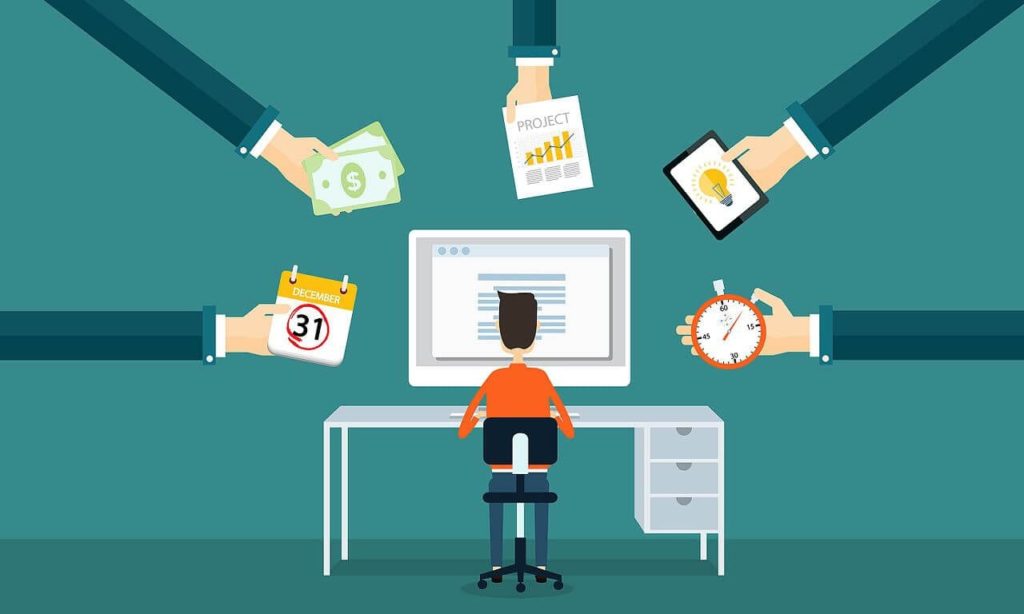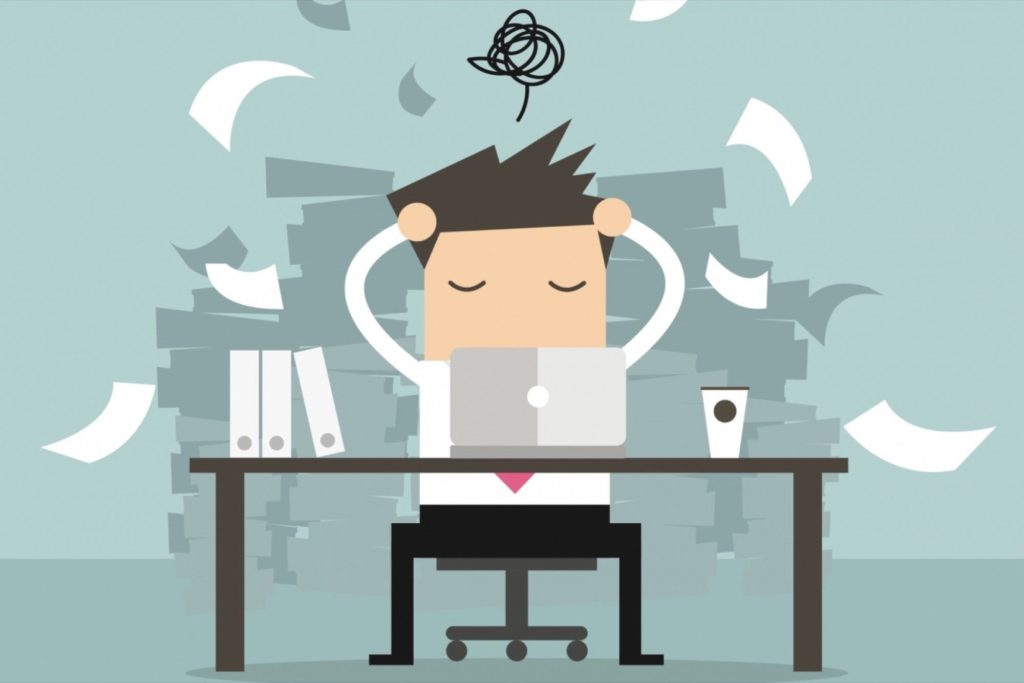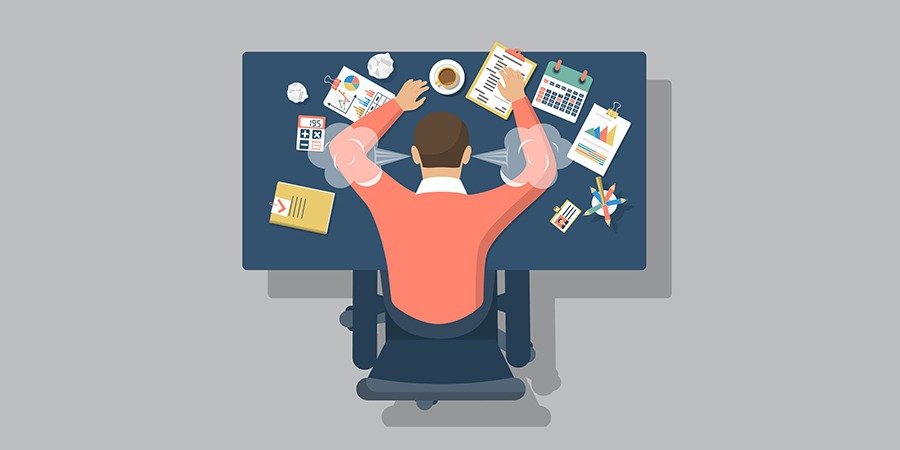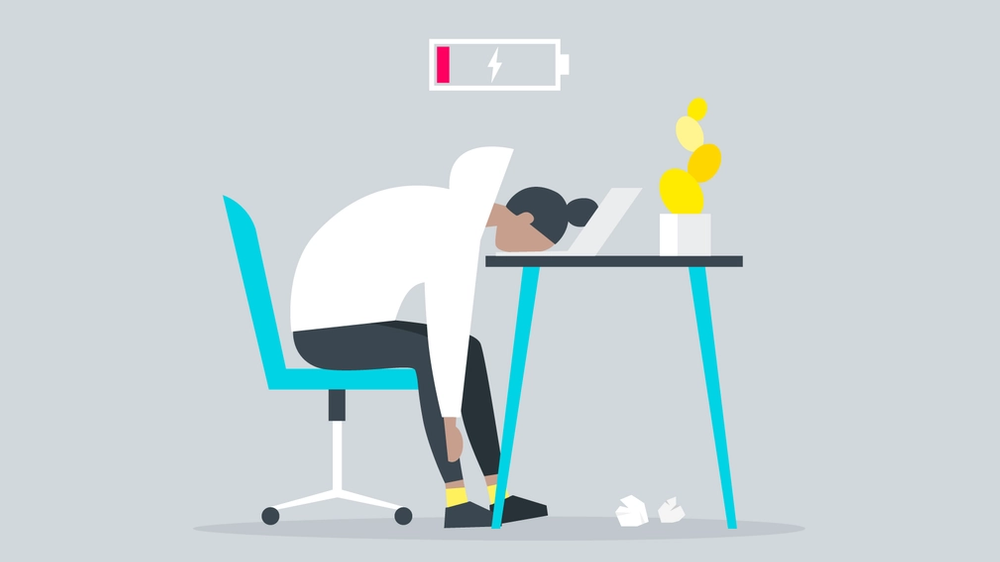
6 Tips to Avoid Burnout and Sustain a Happy Work-Life
We’ve all been there. That point where you lose all focus, your eyes and head are sore, and you sit looking aimlessly at your laptop screen seeking any distraction that may give your head some space.
Burnout is a state of mind that can derive from unresolved stress. It can have sometimes detrimental effects on the quality of your work and more importantly your mental headspace. With working from home, the line between home-life and work-life has become blurrier.
The term ‘signs of burnout’ has shown a 24% search increase in 2020.
The 5 Stages of Burnout
Honeymoon Phase

This is when we start something new. Whether it’s a new project, a new job or a new role. There is a rush of ideas, a high commitment and the energy is flowing. This can last a few days, weeks or months, depending on various factors.
You may experience some stress with this, and that’s to be expected. It won’t necessarily be burnout, but rather expectation stress. This can have a positive effect on your work-rate as it can motivate you to work harder. However, it is important to implement some coping strategies and time yourself, so you do not exhaust all your resources and energy when at the start of a new role/project/job.
Almost every time, you will run out of the creativity that you had at the start, and if this is sooner rather than later, it can be very demotivating. Very few people will realistically sustain the honeymoon phase indefinitely, so prolonging it by managing your energy and expectations is a positive coping strategy.
Symptoms include:
- Commitment to job
- Compulsion to prove yourself
- Job satisfaction
- Sustained energy levels
- High productivity
Onset of Stress

Otherwise known as “Balancing Act”, this phase is marked by job dissatisfaction and fatigue, as opposed to unbridled optimism and energy.
Some days are better than others here. On good days, you may reflect on why it is not like this all the time, and on bad days, you may reflect on whether you are capable for the role. This is a normal but detrimental way to look at this.
Symptoms include:
- Heightened Anxiety
- Sleep disturbances
- Neglect of personal needs
- Lower Productivity
- Job dissatisfaction
Chronic Stress

The third stage in burnout is what is known as chronic stress. This is where your stress is magnified and your ‘bad days’ are becoming more frequent, aswell as your anxiety.
It is important to recognise this stage and take note of your thoughts and feelings. Communicating with your work colleagues can help as you will realise this is a very common problem.
Symptoms include:
- Anger
- Exhaustion
- Missed Deadlines
- Repeated lateness for work
- Persistent tiredness in the morning
Burnout

Stage 4 is burnout itself, where the symptoms have become critical. Continuing as normal is not possible nor recommended, as even coming to work or opening your laptop brings great pain.
Symptoms include:
- Behavioural Changes
- Pessimism
- Feeling of emptiness
- Development of escapist mentality
- Self-Doubt
Habitual Burnout

The final stage is Habitual Burnout. The symptoms of burnout are now an embedded part of your life, and experiencing significant mental, physical and emotional problems are common symptoms.
Symptoms include:
- Burnout Syndrome
- Depression
- Mental Fatigue
- Physical Fatigue
Luckily, if you can relate to any of these stages, you’re not alone, and there are some solutions that we can offer that may help.
How do I know if I’m not just stressed?
Although quite similar, stress and burnout are not the same thing. There are numerous characterisations that will help you differentiate between the two.
| Stress | Burnout |
| Characterise by over-engagement | Characterised by disengagement |
| Emotions are overreactive | Emotions are blunted |
| Loss of energy | Loss of motivation, ideals and hope |
| Primary damage is physical | Primary damage is emotional |
Dealing with Burnout
Recognising the warning signs is stage 1 for many other disorders, and that rule of thumb remains still so important.
Three R’s
- Recognise – Watch for the warning signs
- Reverse – Undo the damage by seeking support and managing stress
- Resilience – Build your resilience to stress by taking care of your physical and emotional health.
Tip #1 – Turn to other people

Being open and transparent with others can really help alleviate the distress associated with burnout. Whether it is you work-colleague, your partner, friends or family, letting them know of what is troubling you can help you manage the problem.
Tip #2 Reframe the way you look at work

Perhaps the most effective way of dealing with burnout is to quit your job or step down from the role/project, but for most, this is a cut-throat solution that is far from practical. That is why it can be just as effective to reframe the way you look at work. There are many small steps that can change your attitude and improve your state of mind.
Try to find some value in your work
Focusing on how your role helps others and makes a difference can provide some much-needed relief. Focus on the aspects of your job that you enjoy. Here is a great blog on how to find value and meaning in your job.
Find balance in your life
Look for meaning in your personal life: Family, Friends, Interests, Hobbies.
Make friends at work
Reach out to your colleagues and take part in any events in your workplace. Having ties can counter the symptoms of burnout and leave you feeling more energised at the workplace.
Tip #3 – Support your mood and energy levels with a healthy diet
Having a balanced diet is paramount to supporting your mood and energy levels. Binging out on junk food is an all-too-common result of burnout and can only worsen the effects quite rapidly if not kept under control.
Focusing on having a rich and nutritious breakfast is particularly important. If you enter the week with some motivation to eat good, then fall off a few days in, perhaps consider meal prepping. This will make it more convenient to eat the nutritious meals you have prepped, instead of that Dominos ‘Meal for 1’ that you’ve been eyeing up.
Tip #4 – Get your ZZZ’s
Sleep is what allows your brain to recalibrate at the end of the day. Not getting your 7-9 hours can be detrimental over a prolonged period, and you may find yourself feeling consistently depleted, even if on some days you do get enough sleep.
Waking up at the same time every day will help shift your body clock for the better and leave you feeling more tired at the end of the day.

One book we can’t recommend enough is Matthew Walker’s ‘Why we Sleep’. If you do not have the time, his appearance on the Joe Rogan Experience is eye-opening itself and is only a few hours long. It Is very informative and will change the way you look at sleep.
Every year on the Monday after the daylight savings switch, where we lose an hour of sleep, hospitals report a 24% spike in heart attack visits around the US.
The day after we turn back the clocks, heart attack visits drop 21% as many people enjoy a little extra pillow time.
Tip #5 – Change your environment
If you are working at home, which most are, then you may feel trapped and staring at the same 4 walls day in and day out. There has become a blurred line between home-life and work-life, and this can certainly explain for the rise in burnout in 2020.

Consider changing where you work. Coworking spaces like ours offer an entirely new way of working. A beautiful office, with maximum light exposure and greenery (which both help counteract burnout) are what you can expect. That is not including the friendly staff who are always on hand for any problems or questions, and other professionals who you can network with.
To find out more about coworking, give our other blog a read.
Changing your work environment is a sure-fire way to leave you feeling more energised and ready to take on the tasks at hand.
We conducted a survey with our members at Hubflow;
100% of our members reported an increase in productivity when working in Hubflow as opposed to working from home.
Tip #6 – Take time off

This one goes without saying.
Prioritise yourself. Talk to your superior and explain your situation. Request a couple of days off to go and do something you enjoy, or just lounge about in your jammies, whatever your flow is!
Take care of your mind. Invest in yourself and you will feel more energised, more self-confident and happy.
